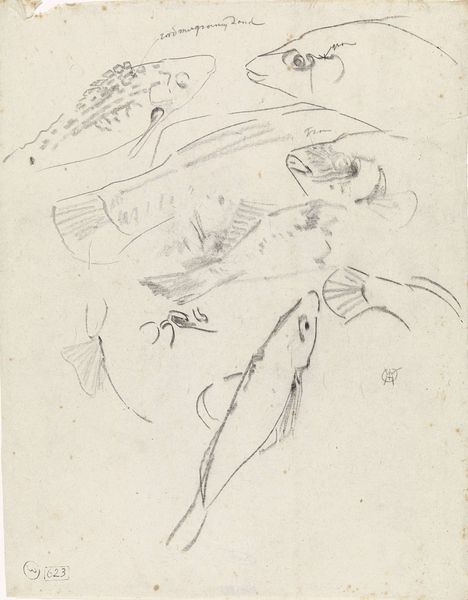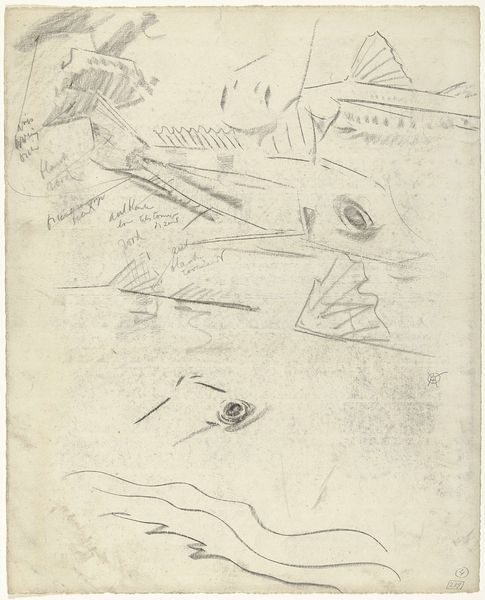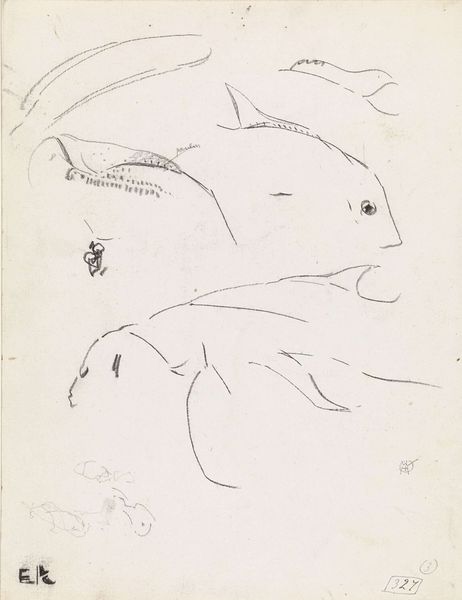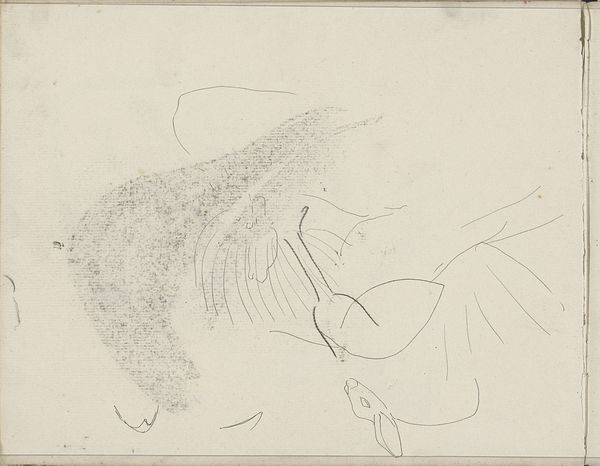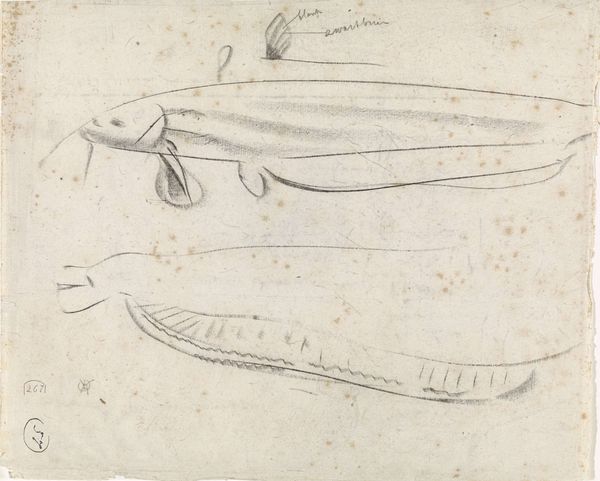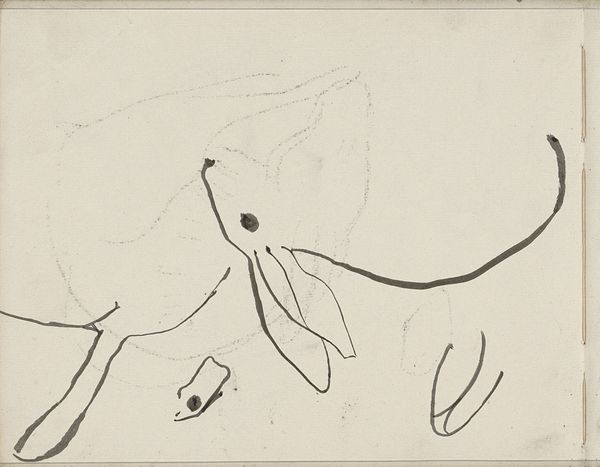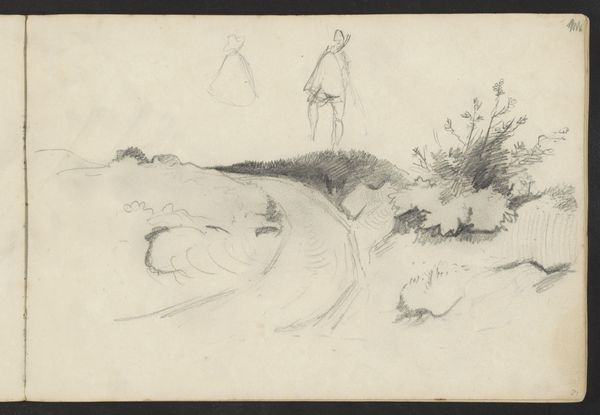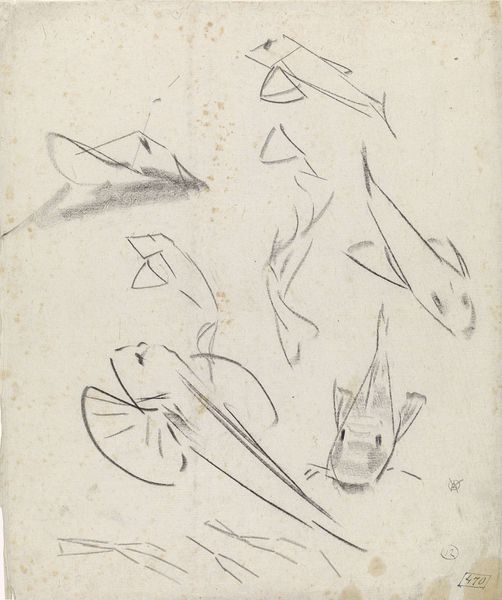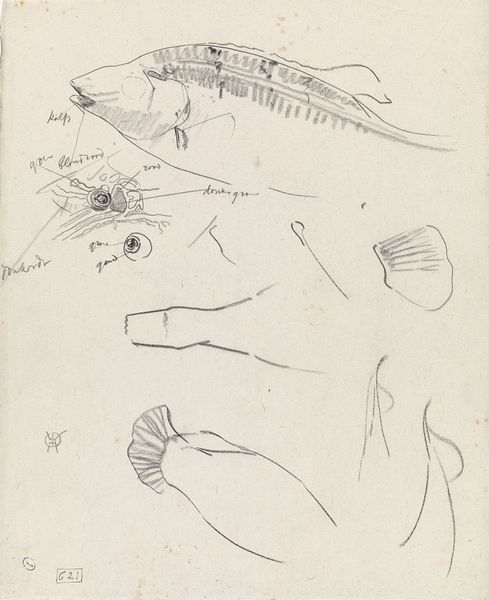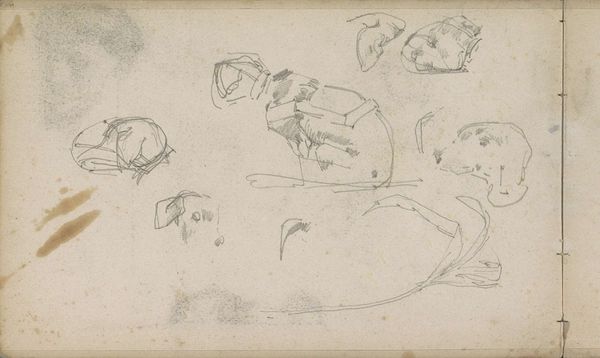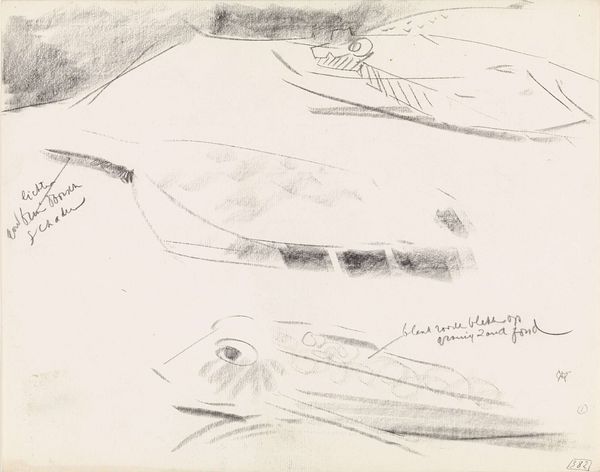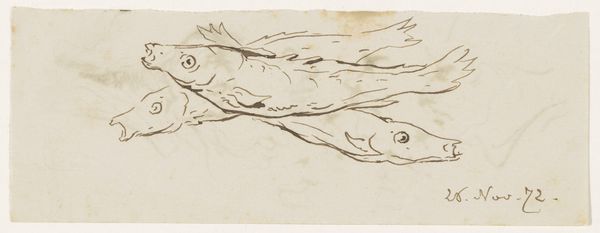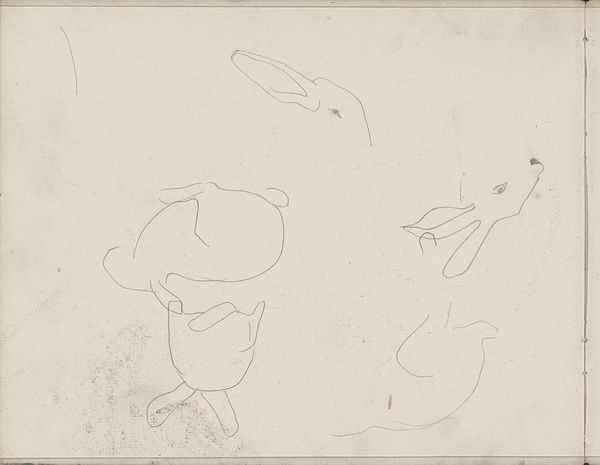
drawing, pencil
#
drawing
#
light pencil work
#
quirky sketch
#
form
#
personal sketchbook
#
idea generation sketch
#
sketchwork
#
pen-ink sketch
#
pencil
#
line
#
sketchbook drawing
#
storyboard and sketchbook work
#
sketchbook art
#
realism
#
initial sketch
Dimensions: height 241 mm, width 281 mm
Copyright: Rijks Museum: Open Domain
Curator: Gerrit Willem Dijsselhof created this pencil drawing, “Gepantserde rotsmeerval,” sometime between 1876 and 1924. It now resides here at the Rijksmuseum. Editor: Well, my first impression is that this piece is deceptively simple. It’s a series of quick pencil strokes, but there's an underlying geometric structure that's quite captivating. The interplay of line and the implied volumes give the fish a remarkable sense of form. Curator: It is likely this drawing came from one of Dijsselhof's sketchbooks. We see the subject of fish appearing in other more detailed works from him, informing us of the common practice of quick sketching for artists during this time. It was a tool for conceptualization. Editor: Exactly. The artist seems less interested in realistic representation and more in exploring the inherent forms and shapes of these creatures. It feels almost like an exercise in pure line, stripped down to its most essential. Take that fish on top – it's an economic execution. Curator: And yet, there’s a political dimension too, isn't there? Dijsselhof's involvement in the Dutch Arts and Crafts movement signals a departure from industrialization. By rendering such forms with traditional drawing techniques, he emphasizes the handmade, personal artistry against a tide of mass-produced imagery. Editor: Absolutely. And think about how he’s composing these elements. There are several viewpoints represented that defy any kind of classical pictorial balance. You could say, he's challenging established notions of harmony and composition right there in his sketchbook. Curator: Which would also make this more than just a preliminary sketch. This drawing performs a dual role—serving as both preparation and a manifesto against prevailing industrialized tastes of that era. The scale suggests it was something private, but we must wonder how it informed his more public work. Editor: I agree. It’s fascinating to consider this unassuming sketch as a site of artistic and social resistance. The simplicity of means almost becomes a virtue. Curator: By unveiling the undercurrents within, what seems a simple sketch, we understand how broader anxieties find quiet expression even within the artist’s personal, private experimentation. Editor: And that initial impression I had about the beauty of line has now gained depth through the added weight of that crucial historical framework.
Comments
No comments
Be the first to comment and join the conversation on the ultimate creative platform.
